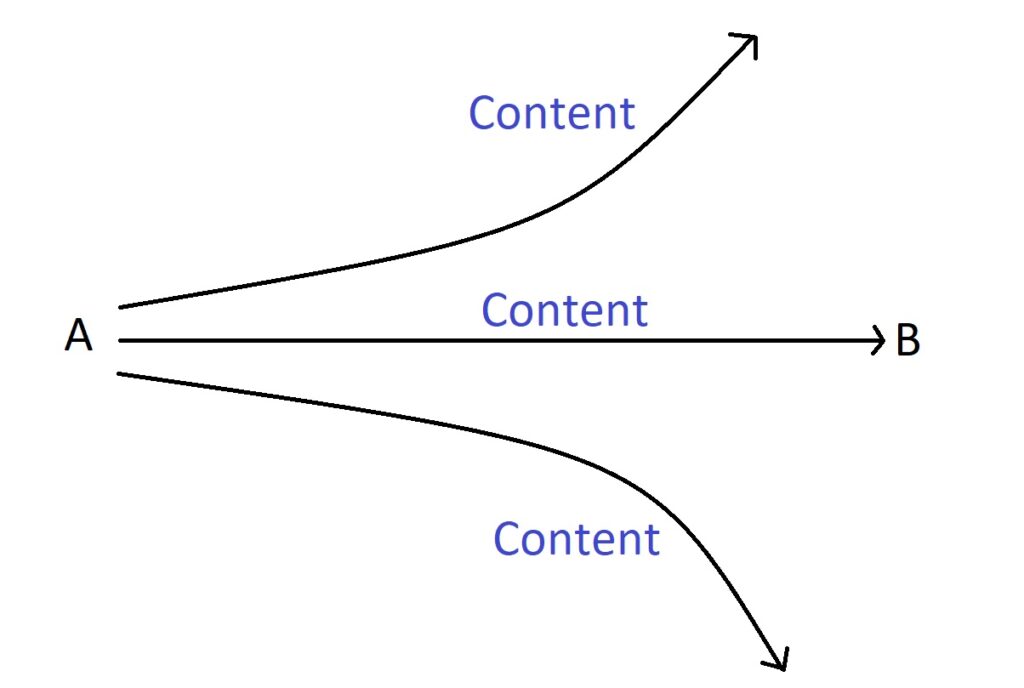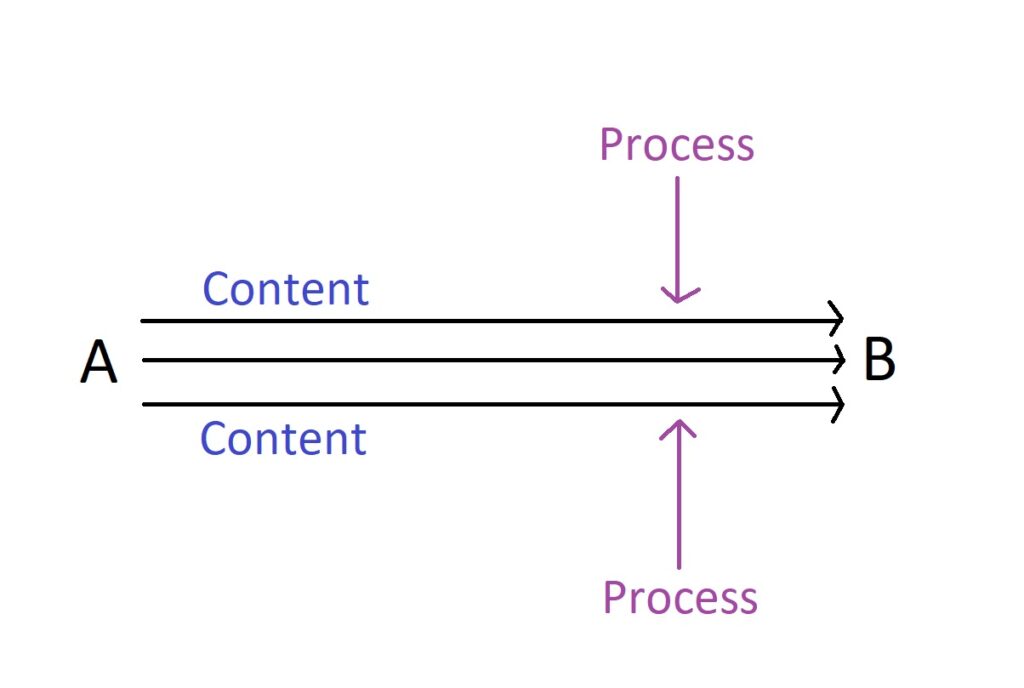There’s a process vs. content distinction in almost everything we do. Keeping in mind the difference between process and content can help you become more effective in everything you do.
Content is simply the ‘what’ of things, and process is the ‘how’ of things. It’s often easier to come up with a ‘what’ than it is to come up with a ‘how’. As you’ll learn in this article, the latter is more important than the former.

We usually talk about the content and process distinction in the context of therapy. Whether or not you’re a therapist, understanding this difference will enable you to become a better communicator.
Process vs. content in therapy
Therapists have limited time in which to conduct their sessions. So, they need to make sure they’re making progress with each session. A common problem they face is that their clients will keep talking about what happened to them.
Of course, therapists need to know what happened. But they’re more concerned with how their clients were affected by what happened. Competent therapists will try to steer the conversation from content (what happened) to process (how it affected the client).
If they don’t, the content-driven conversation may go in all the different directions, wasting time and no progress to show for it. When the conversation becomes more process-driven, real therapeutic progress is made.
To summarize:
Content = Talking about what happened
Process = Talking about how you were affected by what happened
Applying it to daily interactions
What I described above is a pattern common to not only therapy but to all conversations, formal or informal. Humans are natural storytellers who like to go on and on, narrating what happened and being unmindful of the process.
However, being mindful of the process of communication makes it more effective. It helps steer the conversation in the right direction. It also helps connect with the other person on a deeper level.
Focusing on content keeps the conversation superficial. Process goes deeper and is about:
- How communication happens
- How the conversation flows
- How communicators are affected
Humans may be storytellers, but they also care about the process of things.
They want to connect on a deeper level, but they usually don’t want to make the first move. They’ll open themselves up to others in proportion to how much others will open up to them.
Think about how many times people have the following complaints after a conversation:
“They never asked me why I did X.”
“I was hoping he’d ask me about Y. He didn’t.”
“She never asked me why I liked Z.”
It may seem that to be a good conversationalist, you have to ignore content entirely. Not true. Some content is necessary before you can re-direct it with process.
Content lays the foundation for process. You can only re-direct content with process when you have some content to work with.

Process vs. content examples
You can always steer the conversation in the direction you want using questions. Examples of content-based, superficial questions would be:
“What happened next?”
“What did she say?”
“What did he do?”
These questions can steer the conversation in all different directions. At some point, the narrator or the listener, or both, will think:
“Where is this conversation going?”
Since the conversation stays superficial, it quickly breaks down because you eventually run out of things that happened. Things happen, and the happening of things ends at some point.
Process-based questions probe into the wonderful, multi-layered world of the inner experiences of the narrator:
“How did it make you feel?”
“What were you thinking at the time?”
These questions focus the conversation on the goal of building a deeper connection with someone you’re talking to.

Being mindful of the conversation direction
When you become process-oriented, you become mindful of where your conversations are headed. You become good at sensing ‘nothing good can come out of this conversation’ or ‘this conversation is going great’.
This helps save enormous time and energy.
I’ve been in enough arguments, online and offline, to know when it’s futile to proceed with a conversation. I’ve become good at cutting to the chase and asking someone:
“What’s the point? Why are you telling me this?”
This forces them to cut out all the fluff and get to the essential bits. It helps me connect with them deeply in a shorter time frame.
Many people have the mistaken belief that it necessarily takes a lot of time to connect with someone. It doesn’t if you talk about the right things, i.e., deeper stuff like thoughts, motives, hopes, desires, and fears.
Talking about these things validates them as a thinking and feeling human being and people feel good when they’re reminded of their humanness.
Process vs. content in education
If you’re a student, you can apply the concept to your education. Instead of reading books after books on a subject (being content-driven), take some time to plan what fewer books you’ll read and in what order of priority.
I had an old friend call me the other day. He said he needed to prepare for an exam that had Psychology as one of the subjects. He asked me to suggest the best books on the subject.
Psychology is a vast field. I tried to give him a practical, process-based answer saying that he should focus on the exam syllabus and attempt previous-year questions. Start from there and then fill in the gaps searching Google and YouTube.
I gave him an answer that could give him the result (passing the exam) with the least amount of effort. I didn’t want to suggest to him a 500-page Psychology textbook.
But he kept insisting that he wanted to read textbooks. I realized he just wanted more content and was not focused on the process of achieving his goal. I reluctantly gave him a ‘best book’ suggestion that will probably take months to finish.
We tend to forget that our resources are limited.
When trying to reach a goal, one should have a clear outcome in mind, work backward from it to unveil the process, and then deploy limited resources effectively.
